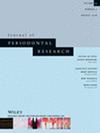Capsaicin attenuates Porphyromonas gingivalis-suppressed osteogenesis of periodontal ligament stem cells via regulating mitochondrial function and activating PI3K/AKT/mTOR pathway
Abstract
Background and Objective
Prevention of periodontal bone resorption triggered by Porphyromonas gingivalis (P. gingivalis) is crucial for dental stability. Capsaicin, known as the pungent ingredient of chili peppers, can activate key signaling molecules involved in osteogenic process. However, the effect of capsaicin on osteogenesis of periodontal ligament stem cells (PDLSCs) under inflammation remains elusive.
Methods
P. gingivalis culture suspension was added to mimic the inflammatory status after capsaicin pretreatment. The effects of capsaicin on the osteogenesis of PDLSCs, as well as mitochondrial morphology, Ca2+ level, reactive oxygen species (ROS), mitochondrial membrane potential (MMP), and osteogenesis-regulated protein expression levels were analyzed. Furthermore, a mouse experimental periodontitis model was established to evaluate the effect of capsaicin on alveolar bone resorption and the expression of osteogenesis-related proteins.
Results
Under P. gingivalis stimulation, capsaicin increased osteogenesis of PDLSCs. Not surprisingly, capsaicin rescued the damage to mitochondrial morphology, decreased the concentration of intracellular Ca2+ and ROS, enhanced MMP and activated phosphatidylinositol 3-kinase (PI3K)/protein kinase B (AKT)/mammalian target of rapamycin (mTOR) pathway. The in vivo results showed that capsaicin significantly attenuated alveolar bone loss and augmented the expression of bone associated proteins.
Conclusion
Capsaicin increases osteogenesis of PDLSCs under inflammation and reduces alveolar bone resorption in mouse experimental periodontitis.

 求助内容:
求助内容: 应助结果提醒方式:
应助结果提醒方式:


